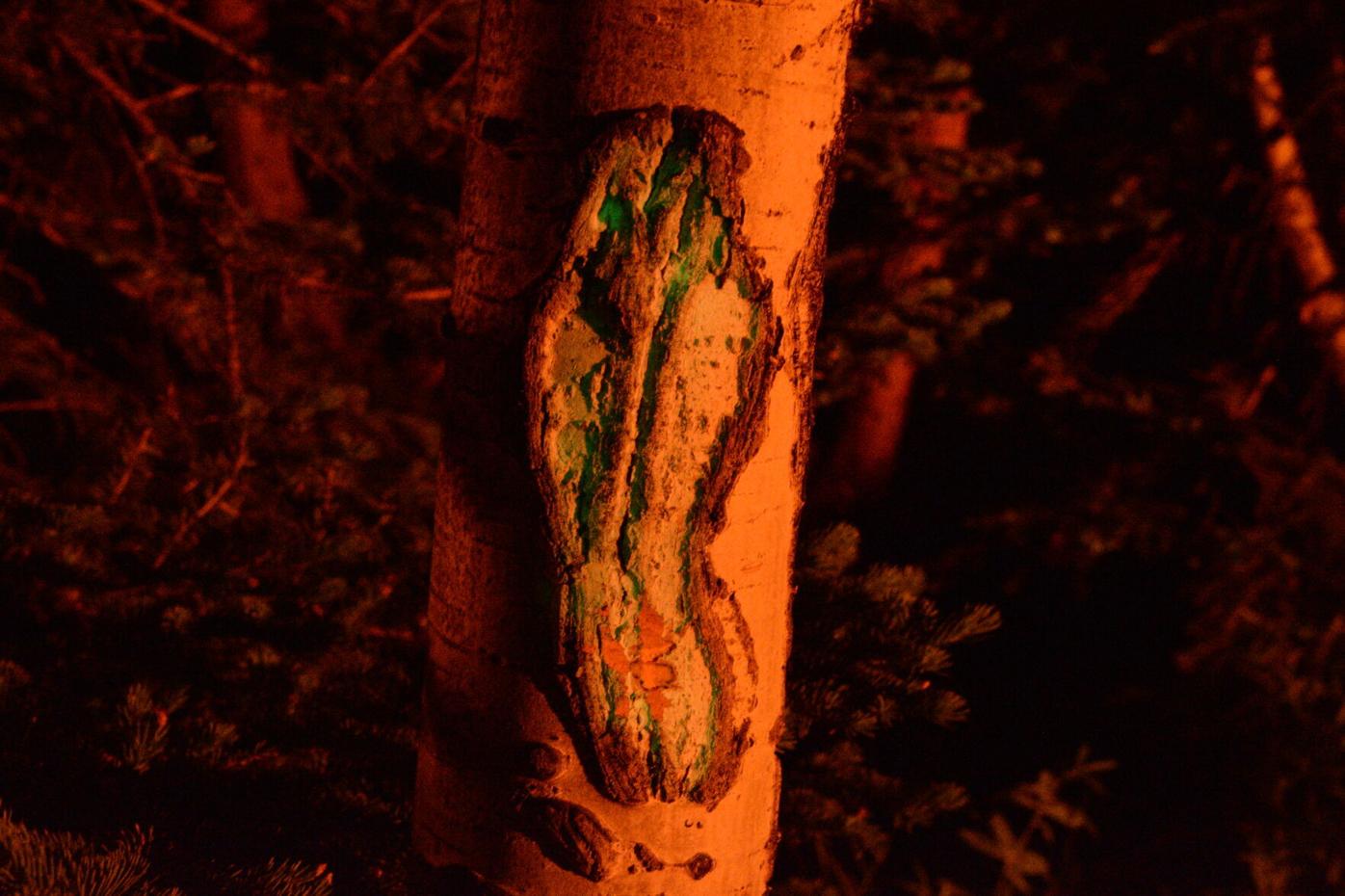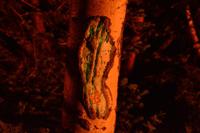Glowing aspen? A Colorado student’s curious report
July 25, 2019. A warm night in the woods of northern Colorado. This is where Jacob Bopp’s strange tale begins.
From a near distance, “it was like the subtle headlights of a car,” he recalled. That could not be right, he thought.
He got closer and later wrote of what he saw:
“A soft, green glow emitted from a grove of aspens …”
Sudden aspen decline: The phenomenon sweeping Colorado’s favorite tree of fall
Bopp reported back to his mycology professor at Colorado State University. Ken Kassenbrock was skeptical, obviously. Regarding aspen, the only “glow” he knew of was the leaves turning gold this time of year.
“He was able to scrape off some of the bark that was showing phosphorescence,” Kassenbrock said. “I was happy to see it, because I was wondering if it was a real thing since I never heard of it.”
Thus began a young man’s bizarre quest for answers, a quest that came with his own written words — about 1,100 recounting the discovery and ensuing research. Went Bopp’s pitch to this newspaper:
“This story is about the challenges of identifying a new species as an amateur scientist, meeting uncertainty with scientific curiosity, and the mysteries that lie within our beloved Rocky Mountains.”
It seemed an unusual effort fitting for Bopp, 25. His curiosity, open mind and free spirit might be gleaned from a quick glance at his Instagram. “Wildlife biologist living in a van,” reads the bio, above images of exotic fish, insects, flora, Burning Man and his recent job leading nature hikes around Aspen.
A mushroom interest led him to Kassenbrock’s classroom, where the professor had demonstrated bioluminescence before. As for Bopp’s suspected “new species,” Kassenbrock tempered his former student’s expectations. (Bopp graduated Colorado State in 2021 with a degree in fish, wildlife and conservation biology.)

Jacob Bopp provided this long-exposure photo of what he suspects to be bioluminescence emitting from an aspen tree outside Fort Collins. Photo courtesy Jacob Bopp

Jacob Bopp provided this long-exposure photo of what he suspects to be bioluminescence emitting from an aspen tree outside Fort Collins. Photo courtesy Jacob Bopp
Whatever mystery bioluminescence may inspire in the imagination, Kassenbrock suspected there was a straightforward explanation. And with more money and access to more sophisticated lab work, that explanation could be reached, the professor figured. (Bopp still hasn’t gotten to that point, he said, having drawn no interest from experts he contacted as far as South America and Russia.)
A fungus or bacteria, among organisms known to glow around the world, made sense to Kassenbrock.
“The other thing that was interesting and also made sense to me was that it was involving an area of damaged bark,” he said. “So it was easy to imagine there was another organism glowing there rather than the aspen, because I certainly had never heard of aspen doing that.”
Nor has Paul Rogers. He would probably know as a scientist plugged into all things aspen at the Utah State University-based Western Aspen Alliance.
From photos provided by Bopp, Rogers recognized one aspect of the trees: The damage Kassenbrock referred to could represent entryways for some kind of bacteria, typical among aspen, Rogers said.
Happy Trails: New trail, new views off Colorado Springs’ popular Section 16
“That patchiness and spottiness is not unlike a Cytospora canker or some kind of trunk fungi, but I’ve never seen or heard of anything like” bioluminescence, he said. “But I want to emphasize that doesn’t mean it’s not true.”
It was surely not something found in 2018 at Denver Museum of Nature and Science’s “Creatures of Light” exhibit. Dr. Frank Krell curated the exhibit that promised to reveal “some of the most magical, wondrous and truly extraordinary creatures and phenomena found in the natural world.”
The exhibit transported guests to a dark cave in New Zealand, where simulated glowworms twinkled along the roof. “Pyrotechnic” plankton lit up the floor of a Puerto Rican lagoon. A coral reef shimmered pink, orange and green. Other highlights of the exhibit: colorful mushrooms, jellyfish and fireflies.
“If you want to see fireflies in Colorado, you have to be in the right place at the right time,” Krell said.
As for other examples of bioluminescence found in the state? Good luck, Krell said.
There is, Kassenbrock noted, Armillaria mellea. It’s commonly called the honey mushroom, which glows green. There is also Panellus stipticus, or the bitter oyster, which also glows green.
But any living specimen is exceedingly hard to find for display at an exhibit, Krell said. No matter, he said “Creatures of Light” was a hit. Which is no wonder.
As he said in the museum’s initial announcement: “Anyone who has seen an animal or a mushroom glow cannot help but assume it is something magical. However, science will eventually explain all of it.”
Bopp knows the science by now.
Bioluminescence is a simple chemical reaction: a molecule called luciferin encounters an enzyme called luciferase, and the reaction is a photon of light. Not so simple for scientists to solve over the years: precisely why it happens in certain organisms.
Some fish glow to confuse predators, while other fish use their light to attract prey. Fireflies glow to attract mates. Glowing mushrooms might attract insects to distribute spores.
Bopp has no explanation for his trees, which he said he visited and photographed last week in the forest beyond Fort Collins. (While he said he would lead the way for an inquisitor, he is hesitant to publicly share the exact location for preservation’s sake.)
“I don’t understand the tactic,” Bopp said of the glow. “I don’t get what it’s trying to do.”
Popular trails closing in Colorado Springs, sparking latest controversy in Bear Creek watershed
Krell wondered the same about French earthworms featured in David Attenborough’s “Life That Glows” documentary.
“Doesn’t make much sense,” Krell said. “They are underground. Nothing sees the bioluminescence, right?”
The earthworm find reminded Krell: “There are always new discoveries where bioluminescence occurs.”
You might read about them in a substantiated, scientific paper before a newspaper, Krell added. He wondered: Is Bopp inviting competition this way?
That’s kind of the point, Bopp said. “At this point, I just kind of want to pass this to someone who can do more research.”
It’s been fun, he said. Made for a fun story.
Though, he’s not all that satisfied with what he wrote.
“There’s not, like, a really great ending to it,” he said.





